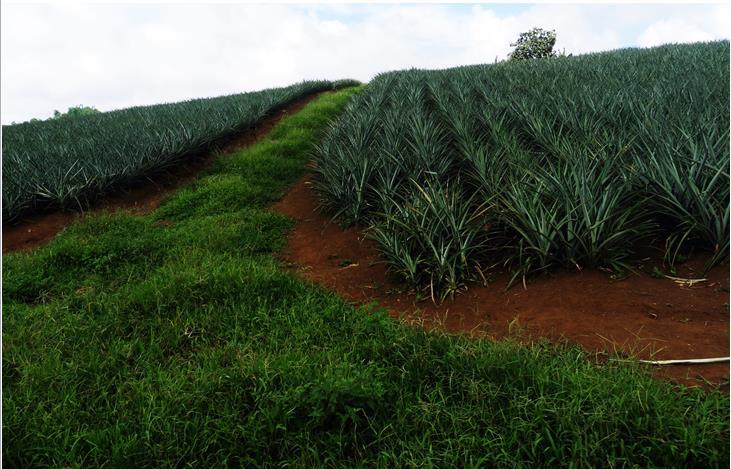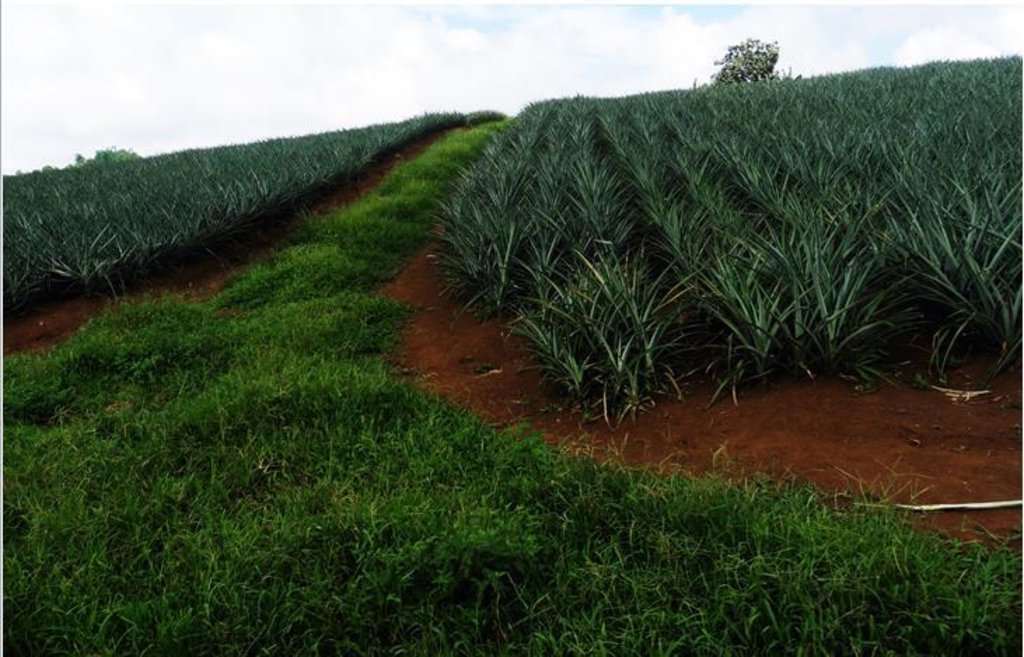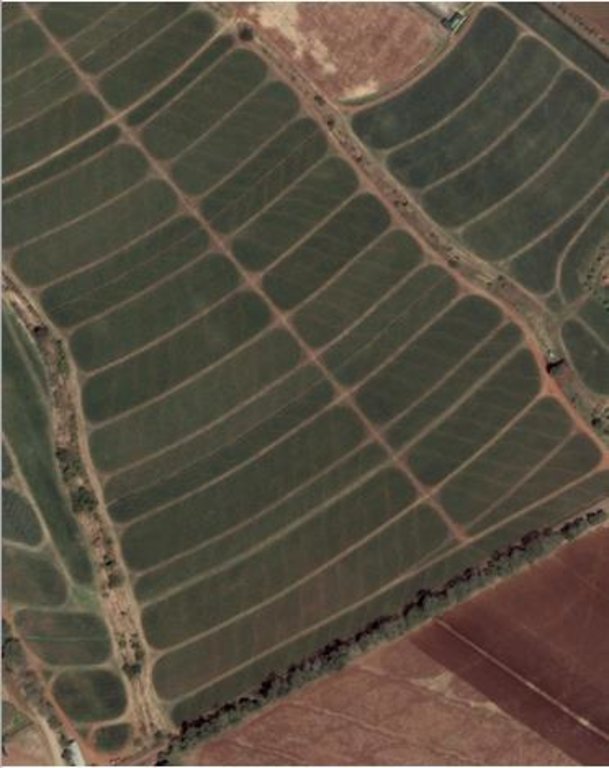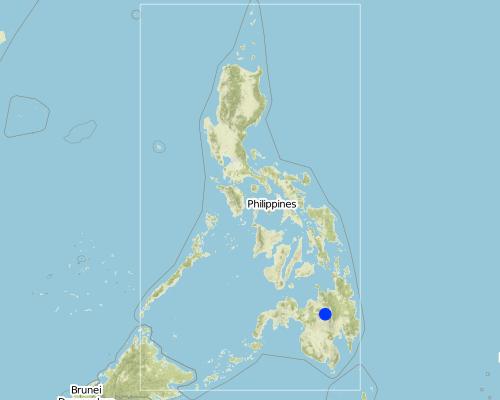Contour Straight Block Layout [Philippines]
- Creation:
- Update:
- Compiler: Philippine Overview of Conservation Approaches and Technologies
- Editor: Baldwin Pine
- Reviewer: Fabian Ottiger
technologies_1308 - Philippines
View sections
Expand all Collapse all1. General information
1.2 Contact details of resource persons and institutions involved in the assessment and documentation of the Technology
SLM specialist:
Manubag Jerry
(088) 221 4302
manubagjerry@gmail.com
Mt. Kitanglad and Agri Development Corporation
Brgy. Lurugan, Valencia City,
Philippines
Name of the institution(s) which facilitated the documentation/ evaluation of the Technology (if relevant)
Bureau of Soils and Water Management (Bureau of Soils and Water Management) - PhilippinesName of the institution(s) which facilitated the documentation/ evaluation of the Technology (if relevant)
Mt. Kitanglad and Agri Development Corporation (MKADC) - Philippines1.3 Conditions regarding the use of data documented through WOCAT
When were the data compiled (in the field)?
15/07/2015
The compiler and key resource person(s) accept the conditions regarding the use of data documented through WOCAT:
Yes
1.5 Reference to Questionnaire(s) on SLM Approaches
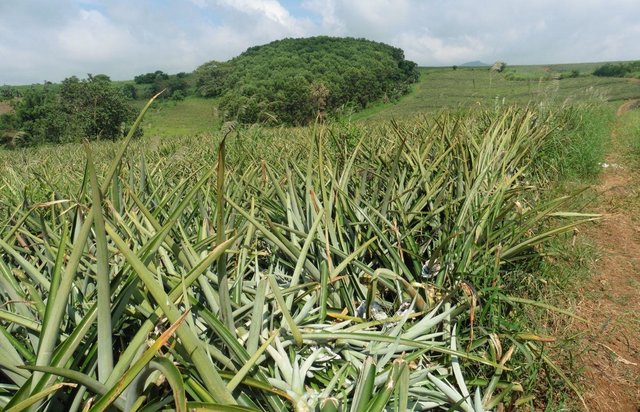
Integrated Soil and Water Conservation Approach in Improving … [Philippines]
Integration of soil and water conservation technologies primarily aim to protect the area from loss of biodiversity and land degradation.
- Compiler: Philippine Overview of Conservation Approaches and Technologies
2. Description of the SLM Technology
2.1 Short description of the Technology
Definition of the Technology:
It is a package of soil and water conservation technology that integrates contouring, bedding, and blocking.
2.2 Detailed description of the Technology
Description:
The main commodity used in the area is pineapple planted in each bed within blocks. Each block contains around 23-25 beds. Spaces between blocks with a dimension of 2-3 meters (width) served as vegetative strips where grass is being utilized and maintained. Grass as natural vegetative strips served as control for soil erosion by water. Vegetative strips are used as roads for accessibility purposes in times of planting and harvesting season. Pineapple production would last for 18-20 months for normal season and these requires massive land preparation. Plowing is done through a modified moldboard plow.
Purpose of the Technology: Pineapple were planted in beds within blocks, which is efficient and effective in water-induced soil erosion control.
Establishment / maintenance activities and inputs: Deep plowing,around one meter deep is a normal practice in the area. This practice would ensure proper root development of pineapple which is crucial for their growth; also it ensures re-introduction of pineapple trashes from the previous cropping as organic matter. Next activity is harrowing, which is usually done twice to pulverize the soil. Plastic mulching is a also a practice after bedding to suppress weeds and conserve water. Weeding is done manually. Foliar fertilizer spraying is done to induce flowering.
Natural / human environment: The area is under humid agro-climate condition with a topography ranging from 1-10% slope. It receives an annual average rainfall of approximately 3072 mm/year. The elevation ranges from 370-890 meter above sea level.
Mt. Kitanglad and Agri Development Corporation (MKADC) operates the area where the technology are being practiced. The technology has been introduced through experiments and adoption from neighboring farms. Farmers living within the area are the laborers of the company, they do all needed activities during preparation of the land, planting and harvesting.
2.3 Photos of the Technology
2.5 Country/ region/ locations where the Technology has been applied and which are covered by this assessment
Country:
Philippines
Region/ State/ Province:
Valencia City, Bukidnon
Map
×2.6 Date of implementation
If precise year is not known, indicate approximate date:
- 10-50 years ago
2.7 Introduction of the Technology
Specify how the Technology was introduced:
- during experiments/ research
Comments (type of project, etc.):
The company through its own initiative, they made a trial and error experiments in designing the layout of the pineapple plantation, including how the vegetative strips will be laid out. In addition, they obtained designs from other farms that practiced soil and water conservation practice and they try to modify it.
3. Classification of the SLM Technology
3.2 Current land use type(s) where the Technology is applied

Cropland
- Perennial (non-woody) cropping
Main crops (cash and food crops):
Major cash crop: pineapple
Comments:
Major land use problems (compiler’s opinion): Presence of hardpan which causes water logging, this has an adverse effect on the growth and harvest rate of pineapple.
3.3 Further information about land use
Water supply for the land on which the Technology is applied:
- mixed rainfed-irrigated
Specify:
Longest growing period from month to month: growing period is 18 monthsSecond longest growing period from month to month: ratooning would last for 24 months
3.4 SLM group to which the Technology belongs
- integrated soil fertility management
3.5 Spread of the Technology
Specify the spread of the Technology:
- evenly spread over an area
If the Technology is evenly spread over an area, indicate approximate area covered:
- 1-10 km2
Comments:
Approximately 6-7 square kilometer
3.6 SLM measures comprising the Technology

agronomic measures
- A1: Vegetation/ soil cover

vegetative measures
- V2: Grasses and perennial herbaceous plants
Comments:
Main measures: agronomic measures
Secondary measures: vegetative measures
Type of agronomic measures: relay cropping, contour planting / strip cropping, mulching, rotations / fallows, breaking crust / sealed surface
Type of vegetative measures: in blocks
3.7 Main types of land degradation addressed by the Technology

soil erosion by water
- Wt: loss of topsoil/ surface erosion
Comments:
Main type of degradation addressed: Wt: loss of topsoil / surface erosion
Main causes of degradation: soil management, Heavy / extreme rainfall (intensity/amounts), land tenure
Secondary causes of degradation: crop management (annual, perennial, tree/shrub), change of seasonal rainfall, labour availability
3.8 Prevention, reduction, or restoration of land degradation
Comments:
Main goals: prevention of land degradation
Secondary goals: mitigation / reduction of land degradation, rehabilitation / reclamation of denuded land
4. Technical specifications, implementation activities, inputs, and costs
4.1 Technical drawing of the Technology
Author:
Patricio Yambot
4.2 Technical specifications/ explanations of technical drawing
Each bed is within blocks. Vegetative strips width is approximately 2-3 meters. Contour lines with an approximate 0.5 meters width served as diversion ditches.
Location: Luguran, Valencia City Bukidnon
Technical knowledge required for field staff / advisors: moderate
Technical knowledge required for land users: moderate
Technical knowledge required for farmer level: moderate
Main technical functions: control of raindrop splash, control of dispersed runoff: retain / trap, control of dispersed runoff: impede / retard, control of concentrated runoff: retain / trap, control of concentrated runoff: impede / retard, control of concentrated runoff: drain / divert, stabilisation of soil (eg by tree roots against land slides)
Secondary technical functions: improvement of ground cover, increase of infiltration, increase / maintain water stored in soil
Relay cropping
Material/ species: pineapple
Remarks: in beds within contoured blocks
Contour planting / strip cropping
Material/ species: pineapple
Mulching
Material/ species: plastic mulching
Remarks: in each bed
Rotations / fallows
Material/ species: grassland
Breaking crust / sealed surface
Material/ species: modified molboard plow
Remarks: plowed accross the slope
In blocks
Vegetative material: C : perennial crops
Number of plants per (ha): 2000
Vertical interval between rows / strips / blocks (m): 0.5
Spacing between rows / strips / blocks (m): 0.5
Vertical interval within rows / strips / blocks (m): 0.3
Width within rows / strips / blocks (m): 0.3
Perennial crops species: pineapple
Layout change according to natural and human environment: the technology follows a fallow period.
4.3 General information regarding the calculation of inputs and costs
other/ national currency (specify):
Philippine peso
Indicate exchange rate from USD to local currency (if relevant): 1 USD =:
46.0
Indicate average wage cost of hired labour per day:
6.50
4.4 Establishment activities
| Activity | Type of measure | Timing | |
|---|---|---|---|
| 1. | Construction of vegetative strips. Vegetative strips has been prepared and laid out during land preparation ( agronomic measures) and is part of the paid labor . | Vegetative | |
| 2. | Plowing, also included the preparation of vegetative strips. | Vegetative | |
| 3. | Harrowing | Agronomic | |
| 4. | Bedding | Agronomic | |
| 5. | Mulching | Agronomic | |
| 6. | Planting | Agronomic |
4.5 Costs and inputs needed for establishment
| Specify input | Unit | Quantity | Costs per Unit | Total costs per input | % of costs borne by land users | |
|---|---|---|---|---|---|---|
| Labour | Labourer | ha | 1.0 | 143.0 | 143.0 | 100.0 |
| Equipment | Machine use | ha | 1.0 | 225.0 | 225.0 | 100.0 |
| Construction material | Pineapple strings | ha | 217.0 | 100.0 | ||
| Total costs for establishment of the Technology | 368.0 | |||||
Comments:
Equipement needed for plowing, harrowing and bedding
4.6 Maintenance/ recurrent activities
| Activity | Type of measure | Timing/ frequency | |
|---|---|---|---|
| 1. | Ratooning | Agronomic | 1 |
| 2. | Spraying | Agronomic | As needs arise |
| 3. | Weeding | Agronomic | As needs arise |
| 4. | Fertilizer Application | Agronomic | As needs arise but normally one to three times per cropping season |
| 5. | Harvesting | Agronomic | Once or twice per cropping season |
| 6. | Trimming of grasses | Vegetative | As needs arise |
4.7 Costs and inputs needed for maintenance/ recurrent activities (per year)
| Specify input | Unit | Quantity | Costs per Unit | Total costs per input | % of costs borne by land users | |
|---|---|---|---|---|---|---|
| Labour | Labourer | ha | 1.0 | 279.0 | 279.0 | 100.0 |
| Total costs for maintenance of the Technology | 279.0 | |||||
Comments:
Machinery/ tools: Mouldboard plough
4.8 Most important factors affecting the costs
Describe the most determinate factors affecting the costs:
Planting materials and labour
5. Natural and human environment
5.1 Climate
Annual rainfall
- < 250 mm
- 251-500 mm
- 501-750 mm
- 751-1,000 mm
- 1,001-1,500 mm
- 1,501-2,000 mm
- 2,001-3,000 mm
- 3,001-4,000 mm
- > 4,000 mm
Specifications/ comments on rainfall:
3072 (Annual Average Rainfall)
Agro-climatic zone
- humid
Thermal climate class: tropics
5.2 Topography
Slopes on average:
- flat (0-2%)
- gentle (3-5%)
- moderate (6-10%)
- rolling (11-15%)
- hilly (16-30%)
- steep (31-60%)
- very steep (>60%)
Landforms:
- plateau/plains
- ridges
- mountain slopes
- hill slopes
- footslopes
- valley floors
Altitudinal zone:
- 0-100 m a.s.l.
- 101-500 m a.s.l.
- 501-1,000 m a.s.l.
- 1,001-1,500 m a.s.l.
- 1,501-2,000 m a.s.l.
- 2,001-2,500 m a.s.l.
- 2,501-3,000 m a.s.l.
- 3,001-4,000 m a.s.l.
- > 4,000 m a.s.l.
Comments and further specifications on topography:
Slopes: gentle to moderate (The area ranges from 1-10% slope, 5-8 % Slope is dominant in the area.)
5.3 Soils
Soil depth on average:
- very shallow (0-20 cm)
- shallow (21-50 cm)
- moderately deep (51-80 cm)
- deep (81-120 cm)
- very deep (> 120 cm)
Soil texture (topsoil):
- medium (loamy, silty)
- fine/ heavy (clay)
Soil texture (> 20 cm below surface):
- medium (loamy, silty)
Topsoil organic matter:
- medium (1-3%)
5.4 Water availability and quality
Ground water table:
5-50 m
Availability of surface water:
medium
Water quality (untreated):
good drinking water
5.5 Biodiversity
Species diversity:
- medium
5.6 Characteristics of land users applying the Technology
Market orientation of production system:
- mixed (subsistence/ commercial
Off-farm income:
- less than 10% of all income
Relative level of wealth:
- average
Individuals or groups:
- employee (company, government)
Level of mechanization:
- animal traction
- mechanized/ motorized
Gender:
- women
- men
Indicate other relevant characteristics of the land users:
Land users applying the Technology are mainly common / average land users
Population density: < 10 persons/km2
Level of mechanization: Mechanized/motorized (Mechanized land preparation (through the use of mouldboard plough) is mostly done in the area.)
Annual population growth: < 0.5%
100% of the land users are average wealthy and own 100% of the land.
Market Orientation: Mixed (subsistence/commercial) Products were both marketed and consumed by land owners, some products that did not qualify quality standards were served as feeds for animals.
5.7 Average area of land owned or leased by land users applying the Technology
- < 0.5 ha
- 0.5-1 ha
- 1-2 ha
- 2-5 ha
- 5-15 ha
- 15-50 ha
- 50-100 ha
- 100-500 ha
- 500-1,000 ha
- 1,000-10,000 ha
- > 10,000 ha
Is this considered small-, medium- or large-scale (referring to local context)?
- large-scale
5.8 Land ownership, land use rights, and water use rights
Land ownership:
- individual, not titled
- individual, titled
Land use rights:
- leased
5.9 Access to services and infrastructure
health:
- poor
- moderate
- good
education:
- poor
- moderate
- good
technical assistance:
- poor
- moderate
- good
employment (e.g. off-farm):
- poor
- moderate
- good
markets:
- poor
- moderate
- good
energy:
- poor
- moderate
- good
roads and transport:
- poor
- moderate
- good
drinking water and sanitation:
- poor
- moderate
- good
financial services:
- poor
- moderate
- good
6. Impacts and concluding statements
6.1 On-site impacts the Technology has shown
Socio-economic impacts
Production
crop production
Socio-cultural impacts
food security/ self-sufficiency
conflict mitigation
Improved livelihoods and human well-being
Comments/ specify:
yes, greatly
Ecological impacts
Water cycle/ runoff
surface runoff
Soil
soil moisture
soil cover
soil loss
6.2 Off-site impacts the Technology has shown
downstream flooding
6.3 Exposure and sensitivity of the Technology to gradual climate change and climate-related extremes/ disasters (as perceived by land users)
Gradual climate change
Gradual climate change
| Season | Type of climatic change/ extreme | How does the Technology cope with it? | |
|---|---|---|---|
| annual temperature | increase | not known |
Climate-related extremes (disasters)
Meteorological disasters
| How does the Technology cope with it? | |
|---|---|
| local rainstorm | not well |
| local windstorm | not well |
Climatological disasters
| How does the Technology cope with it? | |
|---|---|
| drought | well |
Hydrological disasters
| How does the Technology cope with it? | |
|---|---|
| general (river) flood | not well |
6.4 Cost-benefit analysis
How do the benefits compare with the establishment costs (from land users’ perspective)?
Short-term returns:
neutral/ balanced
Long-term returns:
positive
How do the benefits compare with the maintenance/ recurrent costs (from land users' perspective)?
Short-term returns:
neutral/ balanced
Long-term returns:
positive
6.5 Adoption of the Technology
Of all those who have adopted the Technology, how many have did so spontaneously, i.e. without receiving any material incentives/ payments?
- 90-100%
Comments:
100% of land user families have adopted the Technology without any external material support
Comments on spontaneous adoption: Mt. Kitanglad and Agri Development Corporation (MKADC) operates the area where the technology are being practiced. The technology has been introduced through experiments and adoption from neighboring farms.
6.7 Strengths/ advantages/ opportunities of the Technology
| Strengths/ advantages/ opportunities in the land user’s view |
|---|
|
Good for erosion control How can they be sustained / enhanced? Continued practice of the technology |
| Strengths/ advantages/ opportunities in the compiler’s or other key resource person’s view |
|---|
|
Ease of establishing the technology. How can they be sustained / enhanced? More scientific research |
| Transferrability/ Acceptability |
6.8 Weaknesses/ disadvantages/ risks of the Technology and ways of overcoming them
| Weaknesses/ disadvantages/ risks in the land user’s view | How can they be overcome? |
|---|---|
| More researches should be done to prove the effectiveness and efficiency of the technology as soil and water conservation technology. | Allow research authorities to conduct researches in their farm. |
| Weaknesses/ disadvantages/ risks in the compiler’s or other key resource person’s view | How can they be overcome? |
|---|---|
| Somehow labor intensive | Mechanization but should be regulated, productivity of the soil should not be compromised. |
Links and modules
Expand all Collapse allLinks

Integrated Soil and Water Conservation Approach in Improving … [Philippines]
Integration of soil and water conservation technologies primarily aim to protect the area from loss of biodiversity and land degradation.
- Compiler: Philippine Overview of Conservation Approaches and Technologies
Modules
No modules


